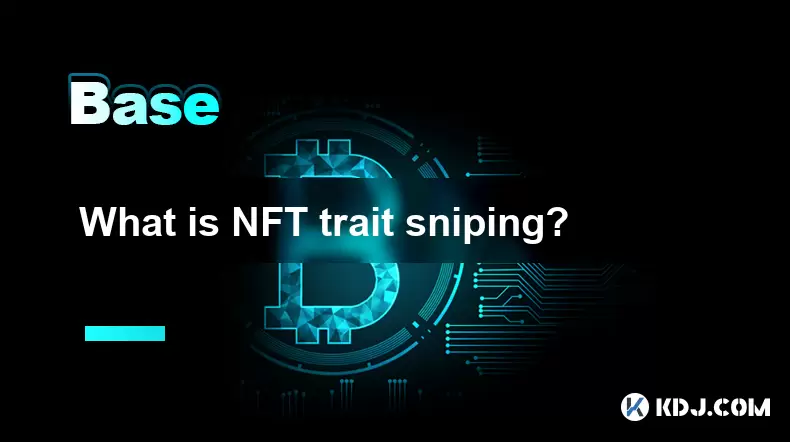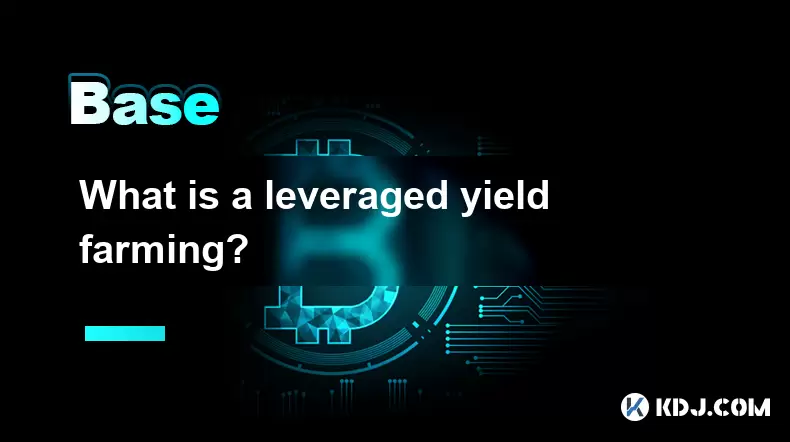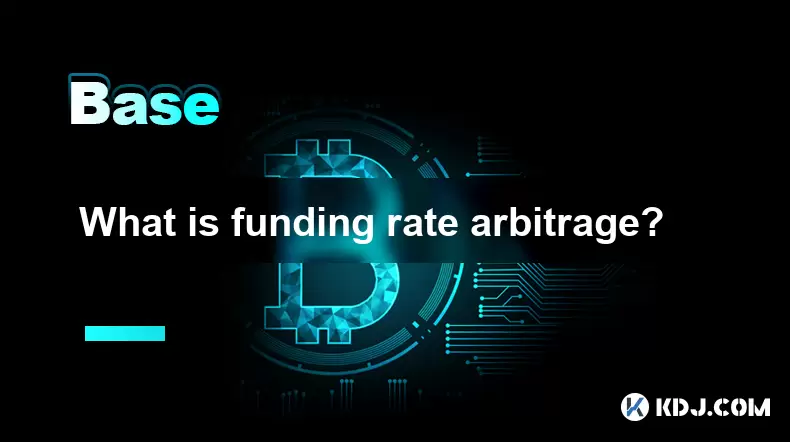-
 Bitcoin
Bitcoin $109,058.5326
-0.67% -
 Ethereum
Ethereum $2,553.3914
-1.56% -
 Tether USDt
Tether USDt $1.0004
0.01% -
 XRP
XRP $2.2311
-2.72% -
 BNB
BNB $658.4030
-0.74% -
 Solana
Solana $150.4006
-2.89% -
 USDC
USDC $1.0000
0.01% -
 TRON
TRON $0.2870
1.26% -
 Dogecoin
Dogecoin $0.1671
-3.94% -
 Cardano
Cardano $0.5819
-3.67% -
 Hyperliquid
Hyperliquid $38.9110
-4.28% -
 Sui
Sui $2.9262
-3.28% -
 Bitcoin Cash
Bitcoin Cash $481.7213
-4.33% -
 Chainlink
Chainlink $13.3658
-3.40% -
 UNUS SED LEO
UNUS SED LEO $9.0445
0.35% -
 Avalanche
Avalanche $18.0828
-3.99% -
 Stellar
Stellar $0.2400
-2.09% -
 Toncoin
Toncoin $2.8111
-3.00% -
 Shiba Inu
Shiba Inu $0.0...01157
-3.51% -
 Litecoin
Litecoin $87.9190
-3.80% -
 Hedera
Hedera $0.1556
-2.74% -
 Monero
Monero $321.6492
-3.46% -
 Polkadot
Polkadot $3.4434
-4.49% -
 Dai
Dai $0.9999
-0.02% -
 Ethena USDe
Ethena USDe $1.0001
-0.02% -
 Bitget Token
Bitget Token $4.4642
-2.92% -
 Uniswap
Uniswap $7.3673
-3.63% -
 Pepe
Pepe $0.0...09790
-7.15% -
 Aave
Aave $269.7432
-3.24% -
 Pi
Pi $0.4830
-3.91%
What is NFT trait sniping?
NFT trait sniping involves quickly buying undervalued NFTs with rare traits before their market value rises, often using tools like OpenSea and Rarity.tools.
Jul 04, 2025 at 09:43 am

Understanding the Concept of NFT Trait Sniping
NFT trait sniping refers to a practice in the non-fungible token (NFT) market where buyers actively search for and purchase NFTs with rare or highly desirable traits at lower prices before their value appreciates significantly. This process typically involves scanning large NFT collections, such as Bored Ape Yacht Club, CryptoPunks, or Azuki, to identify underpriced digital assets that possess unique characteristics.
The word "sniping" is borrowed from auction environments where individuals place last-minute bids to win an item. In the context of NFTs, it means quickly acquiring valuable items before others recognize their potential worth. The key here lies in identifying rare traits—such as specific accessories, colors, or background elements—that are statistically uncommon within a collection.
Rare traits often determine the floor price and overall desirability of an NFT within a collection.
How Do Traits Influence NFT Value?
Each NFT within a collection is generated from a set of attributes or "traits." These traits can range from simple visual components like clothing or expressions to more abstract features like background color or rarity tiers. When analyzing an NFT, collectors and investors look at how frequently these traits appear across the entire collection.
For example, if only 0.1% of a 10,000-piece NFT collection has a golden crown, that particular trait becomes extremely valuable. Collectors may use tools like OpenSea filters, DappRadar, or CoinGecko NFT to analyze the frequency of traits and compare them against current sale prices.
- Identify the total number of NFTs in a collection.
- Check individual NFTs for their traits using marketplace interfaces.
- Use analytics platforms to determine which traits are rarest.
- Compare listed prices for similar NFTs with different trait combinations.
The goal is to find undervalued NFTs that have high-potential traits and then resell them at a premium once demand increases.
Tools and Platforms Used for NFT Trait Sniping
Several platforms and tools help users engage in NFT trait sniping effectively. OpenSea remains one of the most popular marketplaces due to its advanced filtering system, allowing users to sort NFTs by specific traits. Other platforms include Rarity.tools, Rarity.tools' successor Rarity.tools Pro, and CryptoSlam, all of which offer detailed statistical breakdowns of NFT collections.
Additionally, Discord communities and Twitter accounts dedicated to NFT analytics often provide real-time updates on undervalued NFTs. Some traders also use bots or scripts to automate the scanning process, ensuring they can act quickly when a rare-trait NFT drops below expected market value.
Using these tools enables traders to stay ahead of market trends and make informed decisions about which NFTs to acquire.
Steps Involved in NFT Trait Sniping
Engaging in NFT trait sniping requires both research and speed. Here’s a step-by-by process:
- Select a well-established NFT collection with known trait distributions.
- Study the traits associated with each NFT in that collection using rarity analysis tools.
- Look for NFTs that have rare traits but are priced below the average or floor price.
- Act quickly to purchase the NFT before other traders notice its value.
- Hold or resell the NFT depending on market movement and demand for those traits.
It's crucial to note that timing plays a significant role in this strategy. Missing out on a listing by seconds could mean losing the opportunity to profit from a rare NFT.
Successful NFT trait snipers must combine technical knowledge, fast execution, and market awareness to maximize returns.
Risks and Considerations in NFT Trait Sniping
While NFT trait sniping can be profitable, it comes with several risks. Market volatility is a major concern, as the perceived value of certain traits can shift rapidly based on trends, influencer endorsements, or broader crypto market conditions.
Another risk is overestimating the rarity of a trait. Some traits might appear rare but do not necessarily drive demand. It's important to cross-reference rarity data with actual sales history and community sentiment.
Also, transaction fees on blockchain networks like Ethereum can sometimes eat into profits, especially during periods of high congestion. Using layer-2 solutions or alternative blockchains with lower gas fees can mitigate this issue.
Traders should always conduct thorough research and consider diversifying their NFT investments rather than relying solely on trait-based speculation.
Frequently Asked Questions
Q: Is NFT trait sniping legal?
A: Yes, NFT trait sniping is a legitimate trading strategy within the NFT market. It does not involve manipulation or fraud unless carried out through unethical or automated botting methods that violate platform rules.
Q: Can I perform NFT trait sniping manually without tools?
A: While it's possible to manually review NFTs, doing so efficiently and accurately without analytical tools is challenging. Most successful trait snipers rely on platforms that provide rarity scores and trait statistics.
Q: Are there any beginner-friendly platforms for NFT trait sniping?
A: OpenSea is widely used due to its user-friendly interface and filtering options. Rarity.tools and Rarity.tools Pro are excellent for beginners looking to understand trait distribution in various NFT projects.
Q: How do I know if a trait is truly rare?
A: Check the percentage of the collection that possesses the trait. If it appears in less than 1% of the collection and isn't common in recent sales, it’s likely rare. Always verify with multiple sources to avoid misinterpretation.
Disclaimer:info@kdj.com
The information provided is not trading advice. kdj.com does not assume any responsibility for any investments made based on the information provided in this article. Cryptocurrencies are highly volatile and it is highly recommended that you invest with caution after thorough research!
If you believe that the content used on this website infringes your copyright, please contact us immediately (info@kdj.com) and we will delete it promptly.
- Bitcoin's Pattern Break: Are HODLers the Key to the Next Surge?
- 2025-07-04 18:50:12
- Meme Coins, Crypto Tokens, and Joke Creation: A New Yorker's Take
- 2025-07-04 18:30:12
- Level Up Your Lawn: Grass Seeds, Garden Experts, and the £1 Coin Hack!
- 2025-07-04 18:30:12
- Sui Price Surges Amid Lion Group's Treasury Move: What's Next?
- 2025-07-04 16:30:13
- BLAST Price Bounces Back After Token Unlock: Is the Rally Real?
- 2025-07-04 17:10:16
- Wormhole, Coinbase, and Interoperability: A New Era for Crypto?
- 2025-07-04 16:30:13
Related knowledge

What is a user-generated content (UGC) NFT platform?
Jul 04,2025 at 01:49pm
Understanding the Concept of a UGC NFT PlatformA user-generated content (UGC) NFT platform is a digital marketplace or ecosystem where users can create, mint, and trade non-fungible tokens (NFTs) that represent ownership of original digital content they produce. Unlike traditional NFT platforms where creators often include professional artists or develo...

What is a token generation event (TGE)?
Jul 04,2025 at 07:14am
Understanding the Basics of a Token Generation Event (TGE)A Token Generation Event (TGE) refers to the process through which a blockchain project creates and distributes its native tokens to investors, participants, or stakeholders. This event is often associated with new cryptocurrency projects launching on platforms like Ethereum, Binance Smart Chain,...

What is a block explorer API?
Jul 04,2025 at 05:07am
Understanding the Role of a Block Explorer APIA block explorer API is a crucial interface that enables developers and users to interact programmatically with blockchain data. Unlike traditional APIs used in web services, a block explorer API specifically provides access to blockchain-related information such as transaction details, wallet balances, bloc...

What is a leveraged yield farming?
Jul 04,2025 at 09:36am
Understanding Leveraged Yield FarmingLeveraged yield farming is a more advanced form of yield farming, which itself is a popular method in the decentralized finance (DeFi) ecosystem to earn returns by providing liquidity to various protocols. In traditional yield farming, users deposit tokens into a DeFi platform and earn rewards in return, often in the...

What is open interest in derivatives?
Jul 03,2025 at 02:49pm
Understanding Open Interest in DerivativesOpen interest is a critical metric used in the cryptocurrency derivatives market, particularly when analyzing futures and options contracts. It represents the total number of outstanding contracts that have not been settled or closed by either party involved. Unlike trading volume, which counts all trades made i...

What is funding rate arbitrage?
Jul 04,2025 at 11:43am
Understanding Funding Rate Arbitrage in the Cryptocurrency MarketFunding rate arbitrage is a trading strategy employed by crypto traders to exploit differences in funding rates across various perpetual futures exchanges. In perpetual contracts, funding rates are periodic payments made between long and short traders depending on whether the price of the ...

What is a user-generated content (UGC) NFT platform?
Jul 04,2025 at 01:49pm
Understanding the Concept of a UGC NFT PlatformA user-generated content (UGC) NFT platform is a digital marketplace or ecosystem where users can create, mint, and trade non-fungible tokens (NFTs) that represent ownership of original digital content they produce. Unlike traditional NFT platforms where creators often include professional artists or develo...

What is a token generation event (TGE)?
Jul 04,2025 at 07:14am
Understanding the Basics of a Token Generation Event (TGE)A Token Generation Event (TGE) refers to the process through which a blockchain project creates and distributes its native tokens to investors, participants, or stakeholders. This event is often associated with new cryptocurrency projects launching on platforms like Ethereum, Binance Smart Chain,...

What is a block explorer API?
Jul 04,2025 at 05:07am
Understanding the Role of a Block Explorer APIA block explorer API is a crucial interface that enables developers and users to interact programmatically with blockchain data. Unlike traditional APIs used in web services, a block explorer API specifically provides access to blockchain-related information such as transaction details, wallet balances, bloc...

What is a leveraged yield farming?
Jul 04,2025 at 09:36am
Understanding Leveraged Yield FarmingLeveraged yield farming is a more advanced form of yield farming, which itself is a popular method in the decentralized finance (DeFi) ecosystem to earn returns by providing liquidity to various protocols. In traditional yield farming, users deposit tokens into a DeFi platform and earn rewards in return, often in the...

What is open interest in derivatives?
Jul 03,2025 at 02:49pm
Understanding Open Interest in DerivativesOpen interest is a critical metric used in the cryptocurrency derivatives market, particularly when analyzing futures and options contracts. It represents the total number of outstanding contracts that have not been settled or closed by either party involved. Unlike trading volume, which counts all trades made i...

What is funding rate arbitrage?
Jul 04,2025 at 11:43am
Understanding Funding Rate Arbitrage in the Cryptocurrency MarketFunding rate arbitrage is a trading strategy employed by crypto traders to exploit differences in funding rates across various perpetual futures exchanges. In perpetual contracts, funding rates are periodic payments made between long and short traders depending on whether the price of the ...
See all articles

























































































